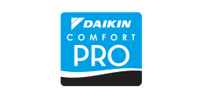A New Era of Cooling: What the Shift from R-410A to R-32 and R-454B Means for You
If you've purchased a heat pump or air conditioner in the past decade, it likely runs on R-410A refrigerant — the standard choice for residential and commercial HVAC systems for the last 10+ years.
But big changes are coming. In an effort to reduce greenhouse gas emissions and environmental impact, the global HVAC industry is transitioning to newer, more eco-friendly refrigerants, namely R-32 and R-454B.
This shift may raise a few questions: Why are we changing refrigerants now? Are the new ones safe? What does this mean for my home or business? We’ve got you covered.
Why Is This Change Happening?
R-410A has served the industry well — it’s stable, non-toxic, and effective. But it also has a high Global Warming Potential (GWP), meaning if released into the atmosphere, it contributes more to climate change than newer alternatives.
As countries work to meet international climate goals (such as the Kigali Amendment to the Montreal Protocol), the HVAC industry is being called to reduce its use of high-GWP refrigerants. That’s where R-32 and R-454B come in.
These newer refrigerants are part of the next generation of cooling technology:
- R-32 has a GWP about one-third that of R-410A
- R-454B is even lower, with a GWP reduction of approximately 78% compared to R-410A
What Are the Benefits of R-32 and R-454B?
You may not notice a difference day-to-day, but behind the scenes, these new refrigerants offer several big advantages:
Greater Energy Efficiency
Systems designed for R-32 and R-454B often run more efficiently than older R-410A models. That can translate into lower energy bills and better system performance.
Lower Environmental Impact
These refrigerants release significantly fewer emissions if leaks occur, helping protect the environment while still keeping your home comfortable.
Improved System Design
Many of the new systems using these refrigerants are designed to be more compact, lighter, and easier to maintain, while delivering the same or better cooling power.
Are R-32 and R-454B Flammable?
A common concern is flammability. Yes, both R-32 and R-454B are classified as mildly flammable (A2L), which is a step up from R-410A's non-flammable (A1) status.
However, this doesn’t mean they’re unsafe. In fact:
- These refrigerants are used safely around the world, especially in Europe and Asia
- They burn only under very specific conditions and are not explosive
- Manufacturers and HVAC professionals follow strict safety guidelines to ensure safe installation and operation
With proper handling, these refrigerants pose no increased risk to homeowners. It’s simply something that technicians need to be aware of during servicing or installation.
What Does This Mean for You as a Homeowner or Business Owner?
1. New Equipment Will Use New Refrigerants
If you're planning to purchase a new heat pump or air conditioning system soon, it will most likely come with R-32 or R-454B. The industry has already started the transition, and most new models will follow suit over the next year.
2. Older Units Are Still Supported
If you already have an R-410A system, there's no need to worry or upgrade right away. R-410A will still be available for service, and technicians are trained to work with both refrigerant types.
3. Potential for Long-Term Savings
Thanks to improved efficiency, your new system may help reduce energy consumption — a benefit for both your wallet and the planet.
Can I Retrofit My Current System to Use the New Refrigerants?
Unfortunately, no. R-32 and R-454B systems require different components and safety features than those designed for R-410A. That means existing systems can’t be retrofitted- a full replacement would be needed.
In Summary
The shift to R-32 and R-454B refrigerants is a positive move toward more sustainable, efficient cooling systems. While the change may seem technical, it ultimately benefits both the environment and the customer:
- Lower emissions
- Better energy efficiency
- Modern systems with updated safety and performance features
At the end of the day, you’ll still enjoy the same reliable comfort — just with a more environmentally responsible refrigerant behind it. Have questions about the refrigerant change or whether it affects your system? Give us a call or stop by — our team is always happy to help walk you through the options and make sure you're ready for what’s next.





